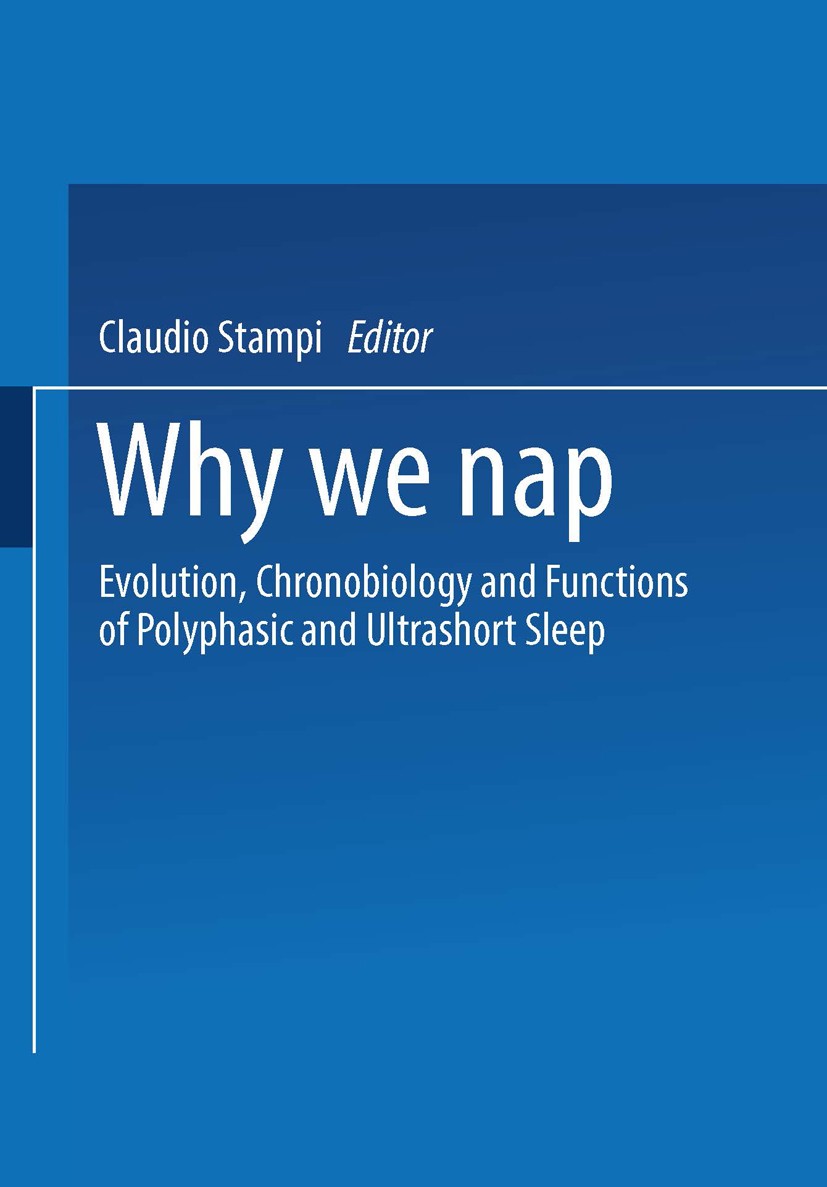| 书目名称 | Why We Nap | | 副标题 | Evolution, Chronobio | | 编辑 | Claudio Stampi | | 视频video | http://file.papertrans.cn/1029/1028177/1028177.mp4 | | 图书封面 |  | | 描述 | J ÜRGEN AscHOFF "Very bad habit! Very bad habit!" Captain Giles to Joseph Conrad who had taken a siesta. -Conrad: The Shadow Line On the Multiplicity of Rest-Activity Cycles: Some Historical and Conceptual Notes According to its title this book tries to answer the profound question of why we nap-and why Captain Giles was wrong in blaming Conrad for having napped. However, in this volume the term nap is not used in the narrower sense of an afternoon siesta; instead, emphasis is placed on the recurrent alternation between states of alertness and drowsiness, i. e. , on rest-activity cycles of high er frequency throughout the 24 hr. In view of this focus, two authors (Stampi, in Chapter I, and Ball, in Chapter 3) rightly refer to the psychologist Szymanski who was among the first to describe "polyphasic" activity patterns. Hence, I consider it appropriate to open this foreword with a few historical remarks. At the time when Szymanski (1920) made the distinction between "monophasic" and "polyphasic" rest-activity patterns and sleep-wake cy cles, respectively, not much was known about the mechanisms of such temporal structures. Although the botanists quite some time ago had demonstrated | | 出版日期 | Book 1992 | | 关键词 | nature; time | | 版次 | 1 | | doi | https://doi.org/10.1007/978-1-4757-2210-9 | | isbn_softcover | 978-1-4757-2212-3 | | isbn_ebook | 978-1-4757-2210-9 | | copyright | Springer Science+Business Media New York 1992 |
The information of publication is updating

|
|
 |Archiver|手机版|小黑屋|
派博传思国际
( 京公网安备110108008328)
GMT+8, 2025-11-7 22:54
|Archiver|手机版|小黑屋|
派博传思国际
( 京公网安备110108008328)
GMT+8, 2025-11-7 22:54


